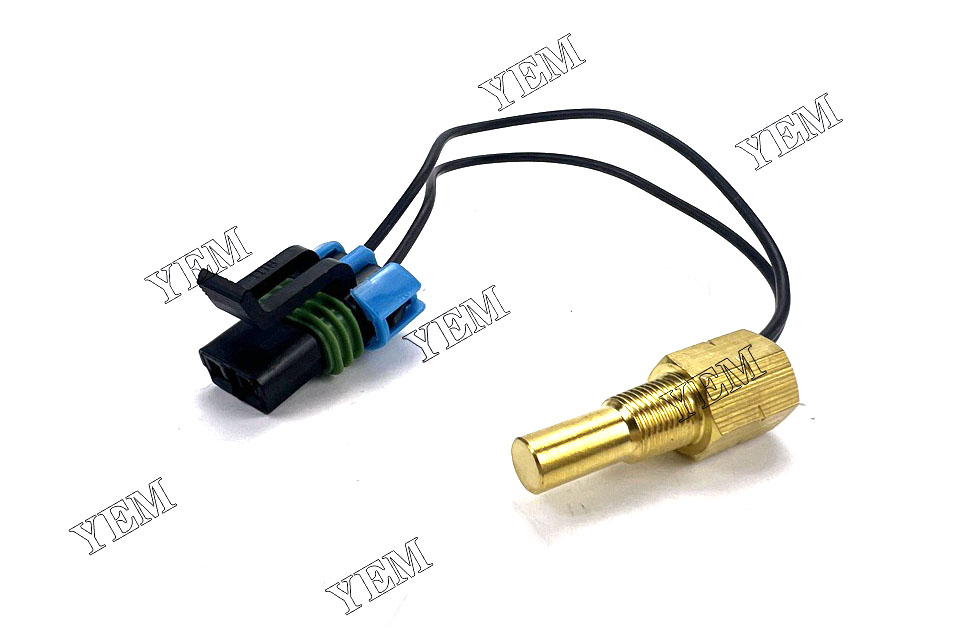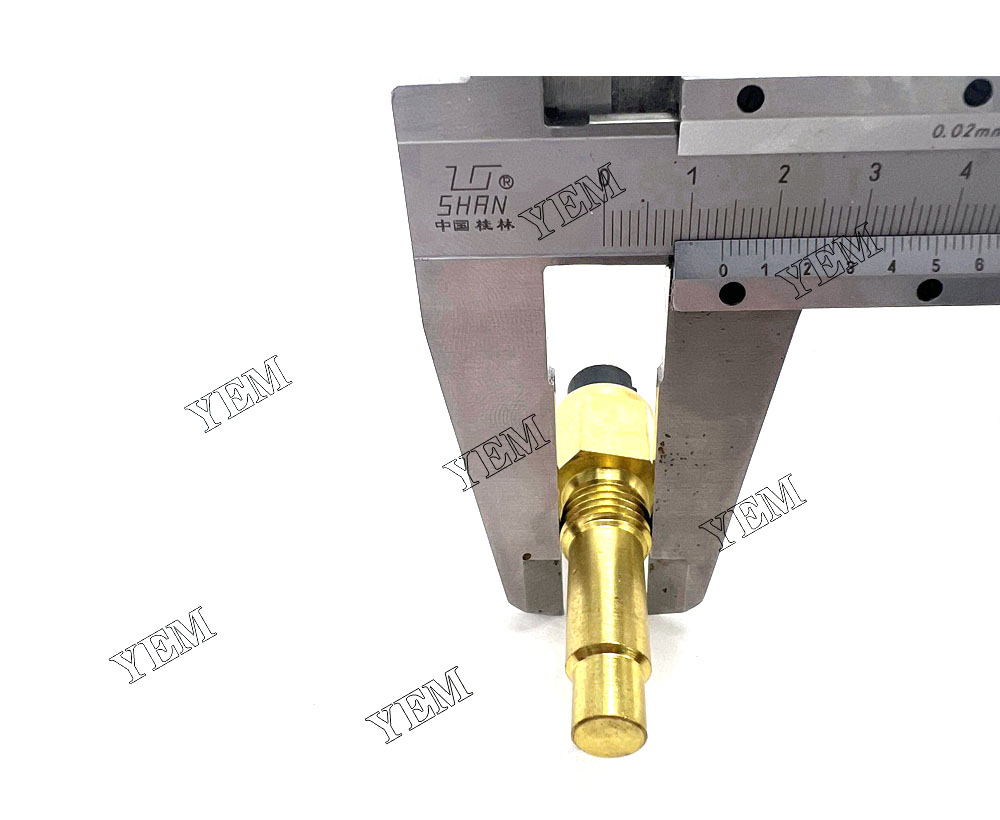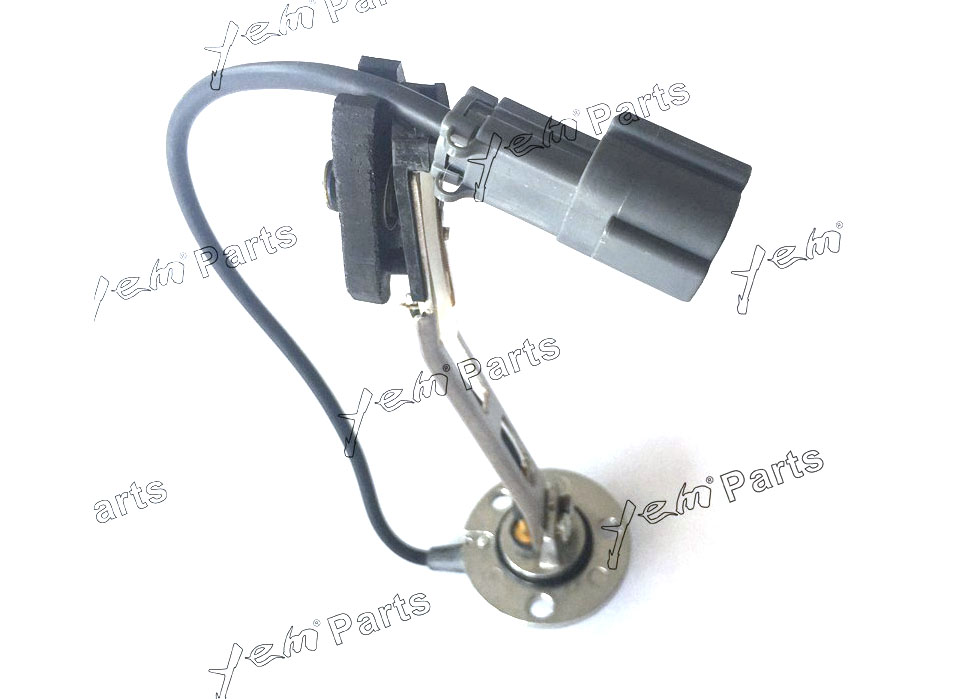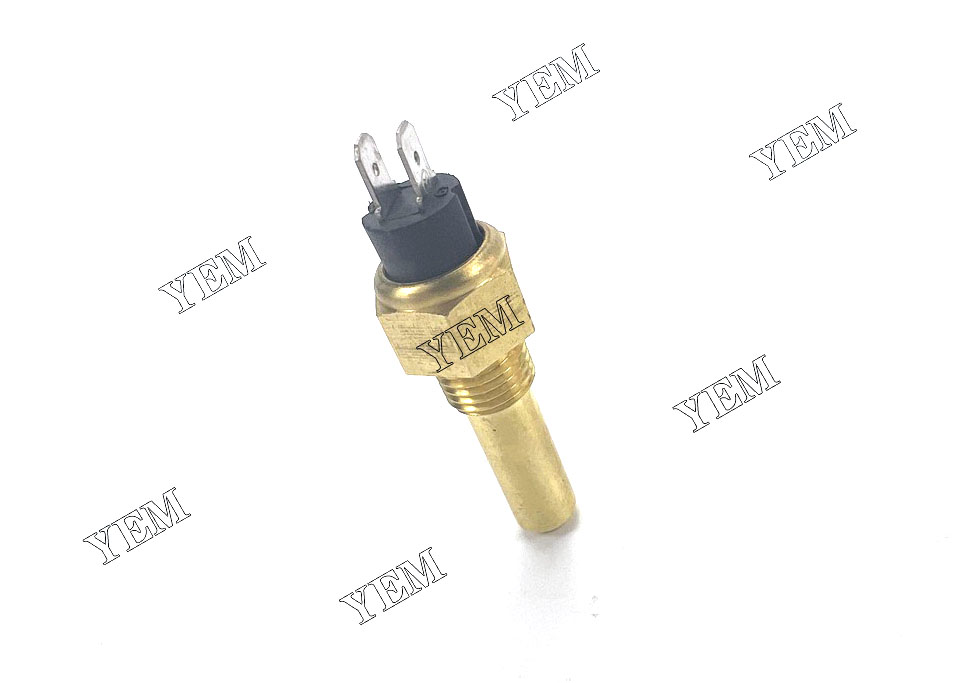The definition and function of engine sensors: introduce what engine sensors are and their role in the engine system
Engine sensor is a device used to measure and monitor the running state of the engine. It can sense and collect physical quantities or signals related to the engine, and convert them into electrical signals for analysis and processing by the engine control unit (ECU).
Engine sensors play a vital role in the engine system, and its main functions include the following aspects:
- Monitoring engine parameters: Engine sensors can monitor and measure key parameters such as engine speed, crankshaft position, throttle opening, etc., to provide ECU and other system components for real-time operating status monitoring and control.
- Provide fuel and air control: Engine sensors can measure and monitor fuel supply, air flow, oxygen concentration and other parameters to help ECU achieve precise fuel and air control to improve combustion efficiency, reduce emissions and optimize fuel economy.
- Detect faults and problems: Engine sensors can monitor faults and problems in the engine system, such as exhaust system faults, ignition system faults, etc., and send relevant fault codes to the ECU for timely diagnosis and repair of engine problems.
- Realize adaptive and optimal adjustment: Based on the real-time data of engine sensors, ECU can realize adaptive control and optimal adjustment according to different working conditions and driving conditions, so as to provide better power performance, fuel economy and driving comfort.
All in all, engine sensors play an important monitoring and control role in modern engine systems, by collecting and transmitting key operating data, they help achieve efficient, reliable and environmentally friendly operation of the engine.

Common engine sensors
Here are some common engine sensors:
- Crankshaft Position Sensor (Crankshaft Position Sensor): It is used to monitor the rotational position and speed of the crankshaft to determine the ignition timing and cylinder sequence of the engine.
- Crankshaft Speed Sensor (Crankshaft Speed Sensor): Measures the rotational speed of the crankshaft, and is usually used in combination with the crankshaft position sensor to provide complete motion information of the crankshaft.
- Oxygen Sensor (Oxygen Sensor): used to measure the oxygen content in the exhaust airflow to help the ECU realize fuel adjustment and emission system control.
- Throttle Position Sensor: Measure the opening of the throttle valve and provide it to the ECU to adjust the fuel injection amount and the load status of the engine.
- Intake Manifold Pressure Sensor (Intake Manifold Pressure Sensor): Measure the air pressure in the intake pipe to help the ECU determine the control of fuel supply and cylinder air intake.
- Intake Air Temperature Sensor: It measures the air temperature in the intake pipe and is used for fuel adjustment and intake system control.
- Engine Coolant Temperature Sensor: Measure the temperature of the engine coolant to monitor the temperature state of the engine and trigger the operation of the cooling system.
- Barometric Pressure Sensor (Barometric Pressure Sensor): Measure the atmospheric pressure to help the ECU correct the intake flow and provide compensation for high altitude environments.
- Oil Pressure Sensor (Oil Pressure Sensor): It is used to monitor the oil pressure in the engine oil circuit to ensure the normal operation of the engine’s lubrication system.
Please note that the above lists are some common engine sensors, and different vehicle models and engine systems may have different sensor configurations.

Causes and Identification of Engine Sensor Failures
Engine sensor failures can be caused by a number of reasons, here are some common ones:
- Sensor aging or wear: Over time, the internal components of a sensor may experience wear or degradation, causing it to degrade or fail.
- Connection issues: The connection between the sensor and the vehicle’s electrical system may be loose, corroded, or broken, preventing the sensor from functioning properly or interrupting communication with the ECU.
- Contamination or buildup: Sensors may be subject to buildup of contaminants, oils, or other substances that prevent their sensitive elements from properly sensing physical quantities and malfunctioning.
- Electrical problems: Problems such as high or low voltage in the electrical system, electromagnetic interference, or circuit failure can cause damage to the sensor’s electronic components.
- Crash or Physical Damage: Engine sensors may have been damaged in a vehicle crash or other physical shock, causing them to not function properly.
To identify engine sensor malfunctions, the following aspects can be considered:
- Trouble code reading: Use OBD (On-Board Diagnostics) scanning tool to read the vehicle’s trouble code, and you can get information about sensor failure through the trouble code.
- Observe engine performance: Pay attention to whether the engine has abnormal working conditions, such as difficulty in starting, loss of power, unstable idle speed or acceleration, etc., which may be related to sensor failure.
- Pay attention to the warning lights: Pay attention to whether there are engine-related warning lights on the vehicle dashboard, such as the engine failure light (Check Engine Light), which may indicate a sensor failure.
- Check the physical connection: Check that the connection between the sensor and the electrical system is secure, and rule out problems such as looseness or corrosion.
- Professional diagnosis: If the above methods cannot determine the sensor fault, it is recommended to go to a professional auto repair shop or an experienced auto engineer for diagnosis. They can use professional equipment and techniques for more detailed troubleshooting.
Please note that the above methods are just some common identification methods, and the specific diagnosis and repair process may need to be adjusted according to specific models and fault conditions.

Engine sensor maintenance and care
Here are some suggestions and guidelines for engine sensor maintenance and care:
- Clean the sensor regularly: Regularly check the surface of the sensor for accumulation of oil, dirt or other impurities. If present, carefully clean the sensor surface with an appropriate cleaner and a soft brush. Make sure not to damage the sensitive sensor element when cleaning the sensor.
- Check the connection line: Regularly check whether the connection line of the sensor is loose, damaged or corroded. If connection problems are found, repair or replace the connection line in time.
- Replace aging sensors: Some sensors have a limited lifespan and may lose accuracy or functionality over time. In accordance with the manufacturer’s recommendations, replace aging sensors in a timely manner to ensure the normal operation of the engine system.
- Avoid physical damage: When doing other repairs or car maintenance, be careful to avoid collision or physical damage to the sensor. For example, when replacing other parts, make sure you don’t accidentally hit or damage nearby sensors.
- Follow Manufacturer’s Recommendations: Perform regular engine and vehicle maintenance according to the vehicle manufacturer’s recommendations and maintenance manual. This ensures that the sensor and other components around it are functioning properly.
Please note that for some complex sensors, such as oxygen sensors, more professional maintenance and diagnosis may be required, and it is recommended to consult a professional auto repair technician when encountering problems. Maintaining regular maintenance and maintenance can prolong the life of the sensor and keep the engine running efficiently.
Engine sensor performance improvements and upgrades
For engine sensor performance improvements and upgrades, the following aspects can be considered:
- High-precision sensors: Upgrading to higher-precision sensors can provide more accurate and reliable data, resulting in improved engine control and response.
- Fast Response Sensors: The speed of response of some sensors may affect the responsiveness of the engine. Upgrading to fast-response sensors reduces lag and makes the engine more responsive and agile.
- Multifunctional sensors: Some sensors can integrate multiple functions, such as measuring temperature and pressure at the same time, or provide additional signal output to meet more complex engine control requirements.
- Durability and reliability improvement: Some upgraded sensors may have stronger durability and anti-interference ability to adapt to harsher working environments and improve system reliability.
- Improved compatibility and ease of installation: Some upgraded sensors may be specially designed for specific engine and vehicle models to ensure compatibility and ease of installation.

For the performance improvement and upgrade of engine sensors, it is recommended to consult and select with professional automotive technicians or suppliers according to specific needs and vehicle models. They can provide more specific recommendations and possible upgrade options to improve engine sensor performance and overall engine system effectiveness.
Future trends in engine sensors
The future trend of engine sensors will be influenced by several factors, the following are some possible development directions:
- Higher precision and response speed: With the development of automobile technology, it is expected that engine sensors will become more precise and sensitive in order to more accurately monitor and control the operating state of the engine.
- Integration of more functions: Sensors may integrate more functions to reduce the number of sensors and system complexity. For example, a single sensor may measure multiple quantities simultaneously, providing a more comprehensive picture of the engine.
- Stronger durability and anti-interference ability: In order to cope with complex working environments and electromagnetic interference, future sensors may use more advanced materials and technologies to provide stronger durability and anti-interference ability.
- Smarter sensors and adaptive systems: Based on advances in artificial intelligence and machine learning, future sensors may be able to learn and adapt to different driving conditions and environments to optimize engine control and performance.
- Wireless transmission and communication capabilities: The wireless transmission and communication capabilities of sensors may be improved to facilitate data exchange and communication with vehicle electronic control units (ECUs) or other automotive systems.
- Integration in engine components: In order to simplify wiring and reduce the number of sensors, some sensors may be directly integrated in engine components, such as combustion chamber sensors or cylinder wall sensors.
- Use of new sensor technologies: The development of new sensor technologies may lead to more advanced sensors, such as nanosensors, optical sensors, or non-destructive testing sensors, to provide more precise and innovative measurement capabilities.
Please note that the above are some possible trends and development directions, and may be adjusted due to technological progress, market demand and changes in policies and regulations. The future development of engine sensors will be closely related to technological progress and innovation in the entire automotive industry.
Contact us
YEM Excavator Parts Team is a dedicated and experienced team that specializes in quality parts for excavators. With our extensive knowledge and expertise in this industry, we offer a wide range of parts to meet the needs of different customers.
Our products cover all kinds of excavator parts, including hydraulic system, engine parts, chassis parts and so on. We take pride in sourcing our parts from reliable manufacturers, ensuring that each component meets the highest standards of quality and durability.
What sets us apart is our unwavering commitment to exceptional customer service. We understand the importance of timely support and our team is always available to respond to inquiries and requests in a timely manner. Our knowledgeable staff is on hand to help customers identify the correct parts for their particular excavator model and provide detailed installation and maintenance instructions.
To get in touch with our dedicated excavator parts team, feel free to contact us via our website, email or phone. We are committed to building long-term relationships with our customers and eagerly look forward to assisting you with all of your excavator parts needs.
